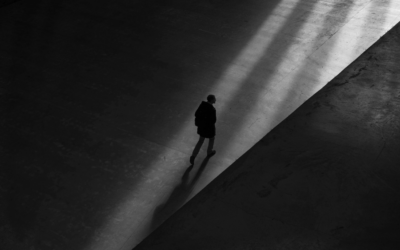How come it usually results in a catastrophe when an amateur breaks the photography composition rules (accidentally or deliberately), but whenever professionals do it (with the exact same rules), they often get praised for breaking new ground and creating a masterpiece?
To understand this, we first need to understand what is composition in photography.
Composition is the way in which something is put together or arranged. When you compose an email, you choose the words and arrange them in a specific order to grab the reader’s attention and deliver your message. When you compose an image, you do the same with the elements in the scene to nudge the viewer and tell your story.
It goes without saying. Composition in photography is absolutely critical. It’s what makes some images stand out and others not so much. A good composition creates balance, adds energy, motion, and a sense of visual excitement. It’s what draws people in, gives them direction, and leads them through the image.
No wonder that the elements of composition in photography are often referred to as rules of composition. For beginners, they are just that, rules. If it’s your first time holding a camera, you are better off following these rules to the letter. Your audience will thank you for that. For professionals, at the same time, these rules serve more like guidelines, and bending some of them is even essential every now and then.
Professional photographers never break the rules just to create controversy or ruffle feathers. Instead, they have a reason for doing this in the first place. In other words, breaking the rules is never the goal but sometimes a necessity to achieve a goal.
After all, you can be meticulous and follow all the rules of photography composition and still end up empty-handed. Being overly technical may also produce images with little or no emotion. Meanwhile, testing out the rules and stepping over the line here and there may lead to artistic results if done correctly.
Put shortly, there are rules for breaking the rules of photography composition. Outlined here are three essential ones. Follow these, and you can safely ignore, twist, bend, or break any rule of composition.
1. Be the keeper of the story.
There are many photography composition techniques for you to follow. Rule of thirds, rule of odds, rule of space, keep it simple, keep it level, patterns and repetition, fill the frame, and so on and so forth. Navigating among those may feel overwhelming at first, but remember–all these rules eventually boil down to one thing, directing your viewer’s attention to a particular point of interest. That’s it.
A good composition is where the photographer has control over the movement of the viewer’s eye. The idea is to take a viewer on a journey through the image and tell them a story. Whenever you bend or break any of the rules, make sure you do not lose this control. Better yet, only break the rules if it gives you more control over the journey and allows you to enhance the story.
Do it because it’s necessary, not because you want it. If this is the case, anything goes.
2. Learn the rules before you break them.
This one is pretty obvious. It is hard to break something if you do not know what you are supposed to break. Once you learn the rules and understand why they exist in the first place, you also understand why, when, and how to break them.
3. Don’t break all the rules at once.
Whenever the limits are removed and artistic freedom unleashed, it’s easy to get carried away. Remember, when you destroy familiarity, you will stir up chaos and fear. If that is not what you are after, do not go breaking every rule in the rule book at once.
4. Better to be safe than sorry.
Whenever you can, leave the rule-bending for the editing process. For example, instead of cropping in-camera, do it on your computer. This way, if it doesn’t turn out how you expected, you can always walk back to the original image.
5. Be very critical of yourself.
This is probably the toughest one, and at the same time, a very significant one. When it comes to breaking the rules, more often than not, it takes from the photograph instead of adding. Be a ruthless editor and ditch the images that end up not working.
Practical Examples
Let’s wrap this up with practical examples. The following images each successfully break at least one of the rules of composition.
1. Betting against the rule of thirds.
The rule of thirds is probably the first compositional rule every beginner photographer learns. Even our cameras are designed to help us follow that rule and display the essential grid on the monitor or viewfinder.
In general, offsetting your main subject or object by one-third results in a more balanced image. It makes room for negative space and draws the viewer’s eye to the subject or object.
That said, this rule may still be broken. Frame your subject dead center for beautiful symmetry, or place your subject near the edge to create tension. Works wonders with landscapes and horizons.


2. The odd one out, aka breaking the pattern.
What’s more captivating than a pattern? A broken pattern.
We, humans, love patterns, and we see patterns everywhere. They are visually attractive and create pleasing and harmonious compositions. Nevertheless, in many cases, patterns tend to work best when broken.
One of the reasons we like patterns so much is because they bring instant satisfaction. The downside of this quick eye pleasure is we also lose interest quickly. Breaking the established pattern helps to counter that. A broken pattern may not be as satisfying as the complete one, but it sure keeps the viewer hooked for longer.
By breaking the pattern, you draw the viewer in and make them engage with your image. Whenever there’s an anomaly, all sorts of questions arise, and people start looking around the image for answers.

Take a look at the image of the roof. Your eyes land almost instantly on the empty spot. Why are some of the planks missing? What happened here? How did it occur? Who’s behind it? This slight subconscious confusion keeps you drawn to the picture, and as your eyes run around, looking for an explanation, you start picking up more and more details from the photo. Soon, more questions will pop up in your head.
The same happens when we look at the two following photos. A simple shadow on one of them and a small shed on another breaks the pattern and catches our attention.


Did you notice how on both images, the interruptions were positioned following the rule of thirds?
3. Slanted horizon.
A tilted horizon is one of the most common mistakes made by beginner photographers. It is often caused by not paying attention to the surrounding elements that are part of the image. But this rule can be broken deliberately to portray psychological uneasiness or tension.

4. Ignoring the rule of odds.
Images are said to be visually more appealing if there is an odd number of subjects. The theory suggests that an even number distracts the viewer and makes the attention shift back and forth between the two. An odd number of subjects feels more natural and makes focusing on one subject easier.
What to do if there is a family of four asking you to take their picture? Should you pull in a stranger or kick out one of the kids? No, you break the rule. It’s also best to ignore this rule whenever there is a dialogue between two people. In that case, you practically want viewers to shift their attention between the two talking.

Likewise, ignoring the rule of odds makes it easier to carry strong emotions, like love or true friendship.

5. Cutting off the subject’s limbs. [Or??? Beheading the subjects.]
If the rule of odds is one of the easiest to step over, and in some instances, you absolutely have to do it, then cutting off the subject’s limbs (especially the head) is where things can quickly go wrong. Still, it’s something you can try if you want to add mystery to your image.


The fashion and advertising industry both use this method quite a lot to give subjects more presence. Plus, it helps to make sure that the subject’s eyes do not steal the attention from the product. On top of that, it forces the viewer to engage. If something is missing, the viewer must fill in the blanks.

This technique can also yield compelling portraits.

There’s a great saying about the rules, worth reminding from time to time––rules are based on what’s known and can inhibit what’s possible. Hence, rules that restrict more than they enable deserve to be broken. Besides, rules are never static, they evolve and change, and that change is inspired by rule-breakers. So, take rules of composition like a guide that assists you to create strong visual images and tell your story. But remember, obeying these rules is not the only way to accomplish that.
One last thing, before you head out and start interpreting the rule book, make sure your gear is not limiting you when attempting to break new ground. We at ProGrade Digital are all about empowering photographers and eliminating obstacles that may stand in their way. So go check out our faster-than-fast memory cards, card readers, and accompanying software, all created for professional photographers and videographers.





